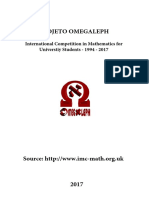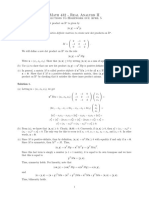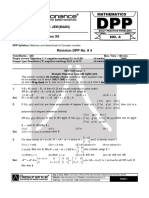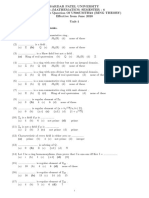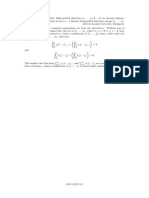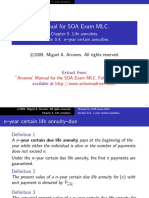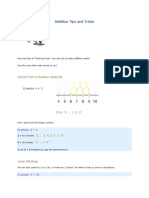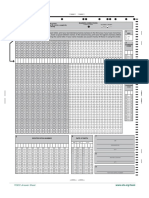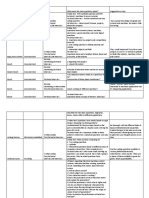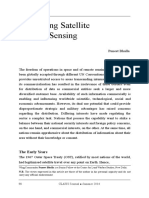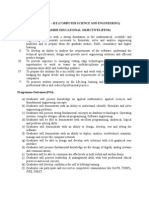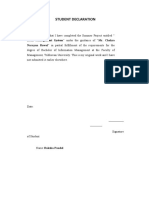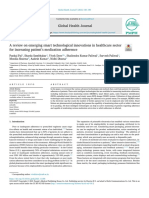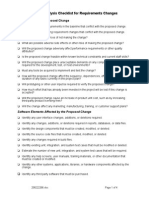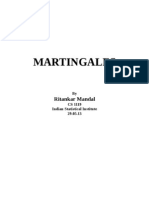0% found this document useful (0 votes)
86 views5 pagesMath 417 Midterm 2 Solutions
This document contains the solutions to a mathematics midterm exam with 5 questions:
1) Identifying properties of a subset of 2x2 matrices.
2) Showing a subset of polynomials is an ideal.
3) Showing a condition for quaternions is equivalent to being purely imaginary with norm 1.
4) Proving an ordered ring with identity cannot be finite.
5) Showing a map is a symmetry of a lattice in R3.
Uploaded by
adelCopyright
© © All Rights Reserved
We take content rights seriously. If you suspect this is your content, claim it here.
Available Formats
Download as PDF, TXT or read online on Scribd
0% found this document useful (0 votes)
86 views5 pagesMath 417 Midterm 2 Solutions
This document contains the solutions to a mathematics midterm exam with 5 questions:
1) Identifying properties of a subset of 2x2 matrices.
2) Showing a subset of polynomials is an ideal.
3) Showing a condition for quaternions is equivalent to being purely imaginary with norm 1.
4) Proving an ordered ring with identity cannot be finite.
5) Showing a map is a symmetry of a lattice in R3.
Uploaded by
adelCopyright
© © All Rights Reserved
We take content rights seriously. If you suspect this is your content, claim it here.
Available Formats
Download as PDF, TXT or read online on Scribd
/ 5





